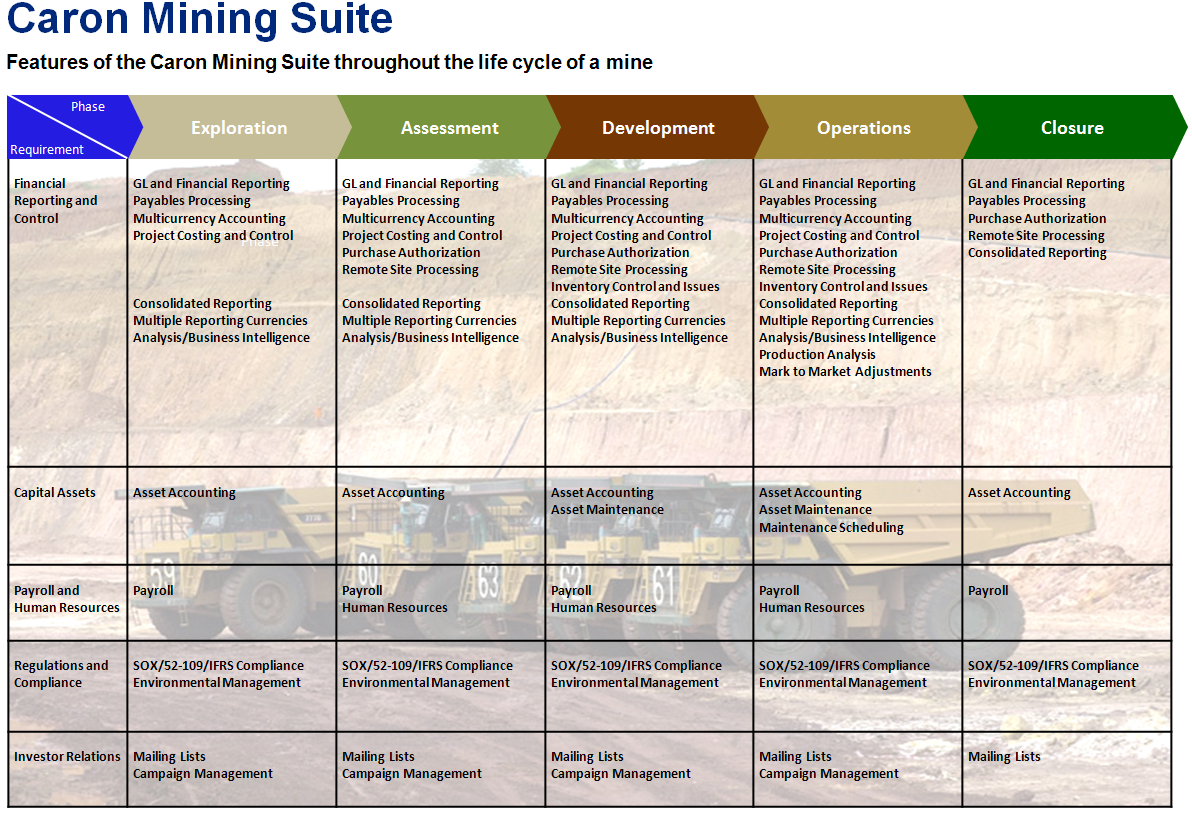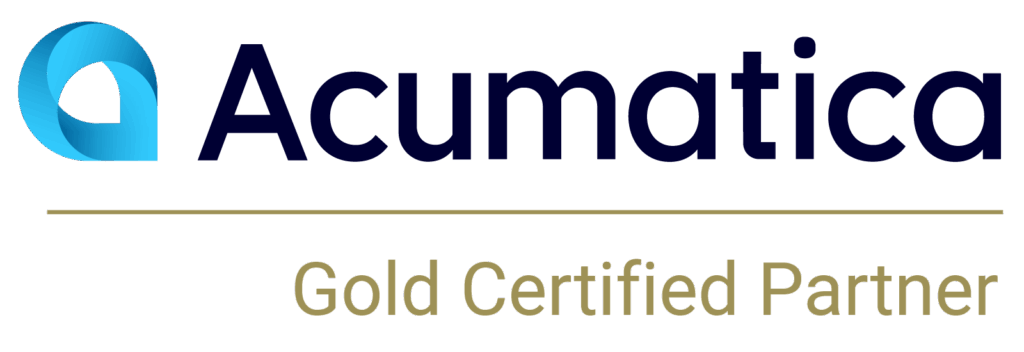The mining industry is somewhat unique and different from other industries in several ways. An example is the fact that the mining industry has several different and identifiable phases.
We focus on business management software for mining companies. During each phase of the mining life cycle, mining companies have certain requirements that can be addressed by business management software. The requirements differ by phase. I’ve looked at five general requirements in each phase of the mining life cycle; financial reporting and control, capital asset tracking, and management, regulations and compliance and investor relations.
Financial Reporting and Control
In the exploration and assessment phases there are some key requirements for financial reporting and control and some “nice-to-haves.” Among the key requirements are payables processing and, often, multicurrency accounting. In the early days, its spend, spend, spend so payables processing is key. For mining companies with multiple exploration operations a project costing system is often a key requirement to properly align expenses to individual exploration projects.
As the project moves from exploration to assessment the volume and complexity of expenses grow. Many of our mining clients consider a purchase authorization system during this phase. This provides control over expenditure and provides a complete trail of authorizations.
Several other programs are often implemented during exploration and assessment. Consolidated reporting is useful for multi-company operations and multiple reporting currencies are required for international operations. This may also be the right time to add analysis and business intelligence to enhance financial and operational reporting.
Project complexity increases significantly when mining operations move to the development phase. The critical components to add during development are construction project costing and, if they were not implemented during exploration, purchase authorization and inventory control. This is the critical time to add analysis and business intelligence to a mining company’s business management system.
When the mine moves to the operations phase the key applications to add including production reporting and revenue tracking. Production analysis becomes key to control operating costs and contract management and price management is critical to the revenue side of the operation.
When mines reach the closure stage, the case for operational and revenue reporting diminishes and the company can scale back to the financial reporting and control software introduced in the exploration phase.
Capital Asset Tracking
In the early phases of a mining operation, capital assets are often tracked on spreadsheets. That works well if there are a small number of capital assets. If the investment is more significant an asset accounting module is often added to the core accounting modules.
During the development phase there are more significant demands for asset tracking. The investment in assets increases as does the business case for adding capital asset software. In most cases, an asset maintenance module is also added to record and control maintenance and repairs to capital assets.
When the mine enters the operations phase, the investment in capital assets pays off as those assets are put to full use in the mine operation. The maintenance software applications usually become more sophisticated during operations since equipment scheduling becomes very important to prevent equipment downtime.
During closure, capital asset tracking software is used to handle disposals and decommissioning of equipment.
Payroll and Human Resources Management
Most organizations require employees. This is certainly true of the mining industry. Core processing is often added early – during exploration and assessment. During maintenance and operations the number of employees can increase dramatically. A larger workforce often highlights a need to move beyond core processing to management. HR solutions are often added during maintenance and operations. During closure, the workforce is reduced and HR software is critical as workers are terminated.
Regulations and Compliance
Proper government reporting is required in all phases of a mining operation. Compliance with accounting regulations and country-specific reporting such as SYSCOA are important early on and this requirement remains strong through the entire life of a mine.
During development, operations and closure, environmental management is critical. Many operations add environmental software at the development phase.
Investor Relations
Investors are critical to any mining operation. From exploration through to closure, the value of an investor relations solution is easily justified. Clear communication, distribution of investor information and thorough tracking of investors can be made much easier with proper software. Forward-thinking mining companies implement an investor communications systems early on.
Starting Out
During the exploration phase, many mining companies miss the opportunity to implement software that they could use throughout all phases of the mining life cycle. Many implement entry level software during exploration and are forced to convert to higher-functioning solutions as they move to different phases. The high cost and inconvenience of software conversions can be avoided if a more functional but modular solution is selected at the exploration phase. Good business management software will move smoothly through the phases of the mining life cycle by adding and removing modules as requirements change.




